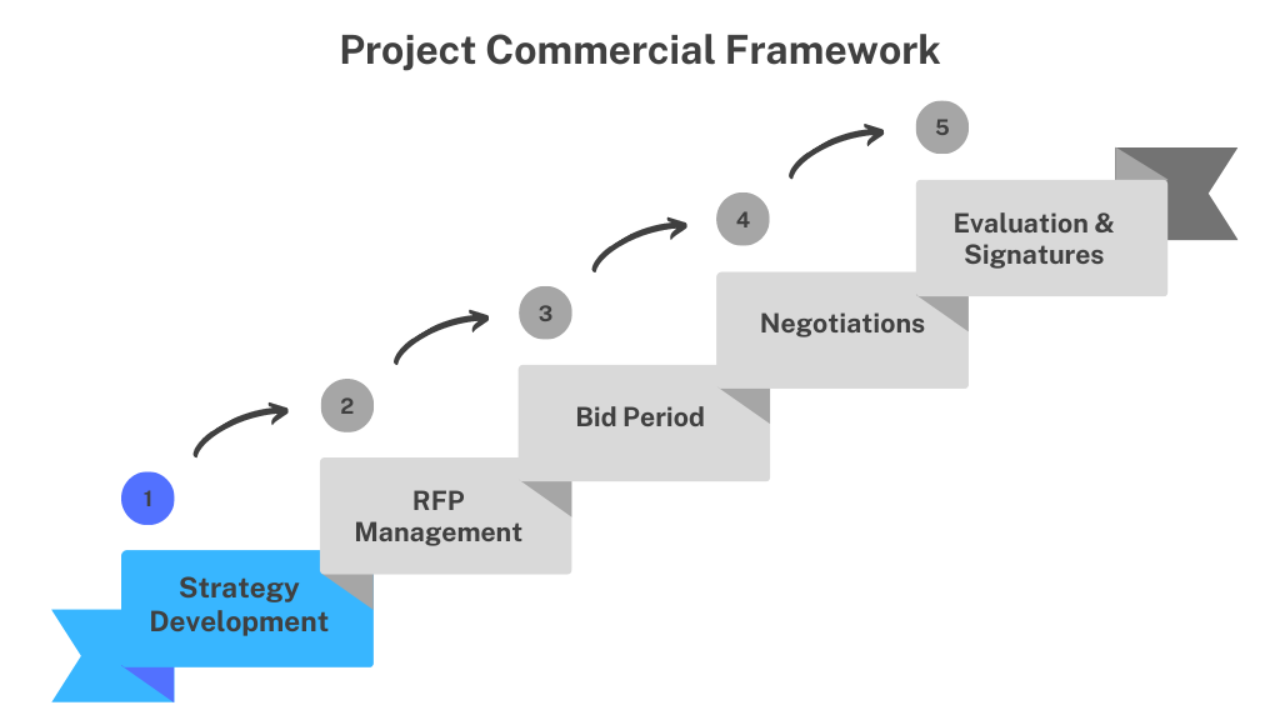How to set yourself up for contracting success!
May 03, 2023
In this article we’ll break down the steps in the Strategy Development phase of the Project Commercial Framework so that you can get off on the right foot when putting in place your next major contract.
Step 1: Ask yourself the Magic Question
“What do you want to be when you grow up?”
Now, this might seem like a silly question, and truthfully it kinda is, but your answer is really quite important to your contracting strategy!
Here’s why…
Asking yourself this question forces you to establish your project objectives, your execution philosophy, and your commercial strategy – All of which set the tone of your project and its strategic direction.
Which is why it’s so critical for you to get this right up front!
As an owner, there are a variety of ways you could answer this question.
You could want to be completely hands-off from a project execution standpoint, or you could be fully integrated with the contractor’s team, and everything in between!
It’s likely you’ll want to create a “team” environment, where you and the contractor are singing to the same sheet of music, while focusing on solutions instead of creating problems.
That’s good, it means you’re in the right place!
Step 2: Understanding your Circumstances
As an owner, it’s absolutely critical you have a holistic view of your circumstances, including your internal and external dynamics. Areas like:
- Project location and geography
- Investment status and schedule
- Scope definition
- Project team members and dynamics
- Corporate and regional management
- Project champion(s) and advocate(s)
- Internal and external stakeholders
- Past, present and future challenges
- Permit status (in hand and needed)
- Social status, local hiring, and procurement
- ESG requirements
- Existing contracts and contractors
- Industry practices in the region
- New or unique technologies
- Financing requirements
- Regional or corporate SCM involvement
With this information in hand, you can start to formulate your strategy.
Step 3: Putting it all Together
The primary components of your Contract Strategy document include:
- Description of the project
- Description of the services and/or supply
- Estimated contract value
- Contract need date
- Proposed commercial basis
- Proposed contract structure
- Award basis
- Qualified contractor pool
- Sourcing strategy
- RFP issue date
- Proposal due date
- Proposal evaluation and selection
- Negotiation strategy
- Contract administration plan
- Performance monitoring and management
- Contract close-out and completion requirements
- Signatures of approval
The intent of the Contract Strategy is to outline the approach and plan for managing the contract through the project lifecycle.
The Contract Strategy serves as a guide for the project team and stakeholders, ensuring that all parties are informed and aligned.
You’ll want to keep it to a summary-level; if there are additional details you want to cover, they can reside in your project execution plan or project procedures manual, as appropriate.
As an executive, I recommend delegating the document development to your lead contracts person (or similar). You set the strategy and tone; they do the writing.
This will allow you to focus on stakeholder management and ensuring you have a budget and schedule you can deliver to!
But at the end of the day, the document (and the explicitly stated strategy contained therein) is still yours to own.
Step 4: Socializing your Plan
As we talked about last week, ensuring Executive Management buy-in and support is one of the Top 5 Commercial Principles to get right.
Begin socializing your strategy early with the list of stakeholders you identified previously in Step 2.
Before putting pen to paper, I recommend you reach out to your key stakeholders to solicit their perspective, opinions, and experiences for the Contract Strategy you are developing.
Then, develop a draft strategy document and send it to each of your stakeholders individually.
If possible, meet with them 1-on-1 to gather feedback. Make it personal.
After meeting with your stakeholders, make the necessary modifications to your draft, and then setup a group meeting aimed at finalizing the Contract Strategy.
Once the Contract Strategy is agreed and finalized send it out for signatures by the relevant stakeholders.
Some may think this final step is unnecessary, but requesting signatures helps insure alignment.
If they buy in, they will sign it. If they don’t buy in, they won’t, which means you still have some work to do on gaining alignment. Do not, in any case, skip this step.
Step 5: Forward Planning
With your completed Contract Strategy in hand, it’s time to move into the RFP Development phase of the Project Commercial Framework!
As you begin to develop your RFP, your Contract Strategy will serve as the foundation and as your guide throughout the development and implementation process.
Want a Contract Strategy Template in your inbox?
Shoot me a note at [email protected] and let me know about your project/contract, we’ll get one started for you!
We are passionate about doing things better – no more horrifying industry statistics – there is a better way! Grab a time to meet with me 1:1 to discuss the unique challenges of your project.

